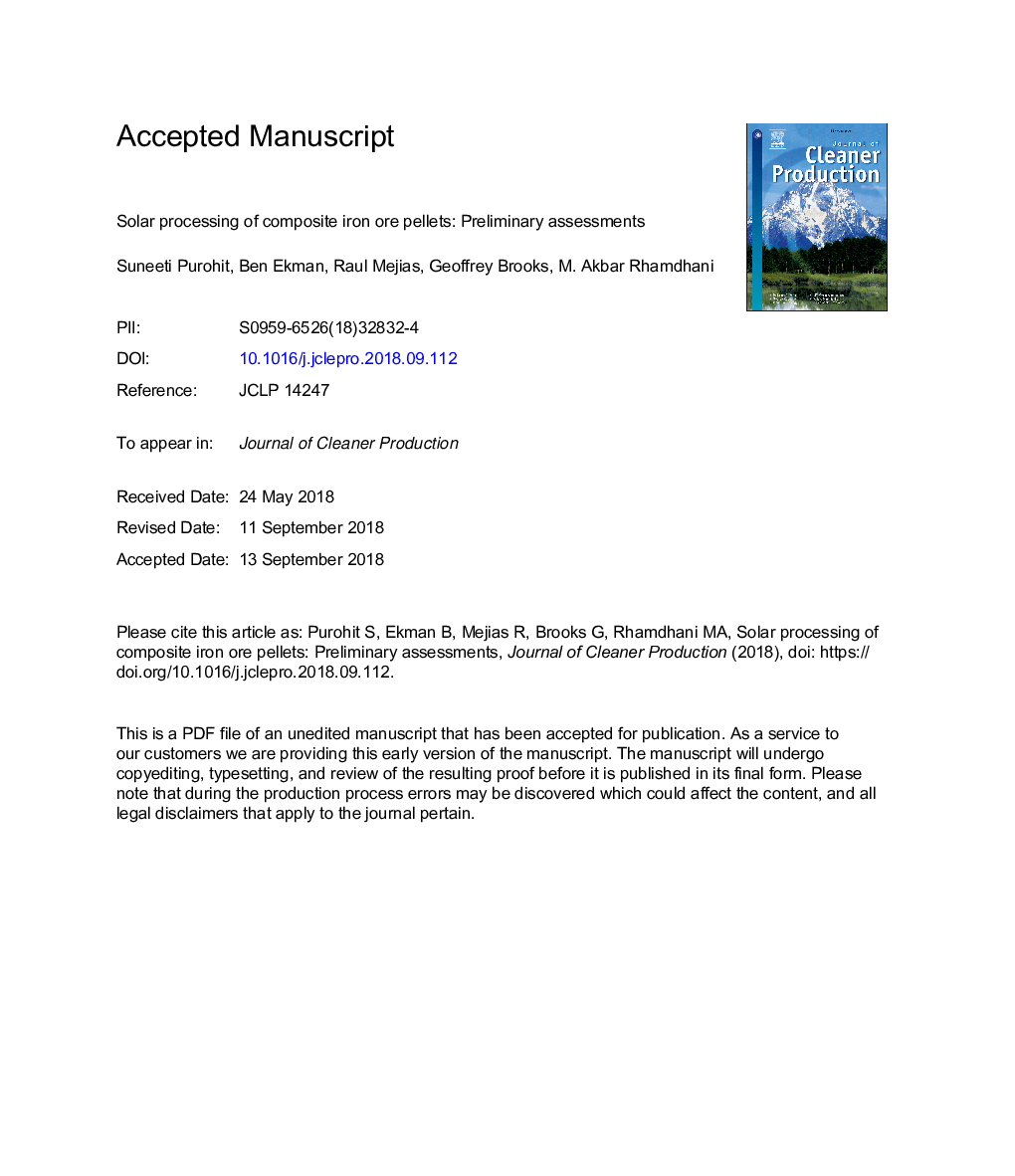| Article ID | Journal | Published Year | Pages | File Type |
|---|---|---|---|---|
| 11026411 | Journal of Cleaner Production | 2018 | 25 Pages |
Abstract
Composite pellet processes have been used in iron making industry over a number of decades to produce sponge iron from a range of iron ore feed materials. These processes along with all other iron-making units utilize fossil fuel based inputs such as coal, coke and natural gas, for reducing the iron ore feed and fulfilling the energy demand of the process. In this paper, we propose a new iron making process that uses solar energy for smelting the iron ores and limits the coal requirement only to that of required for reduction purposes. Therefore, reducing the overall carbon footprint of the process. Mass and energy balance calculations were carried out for the proposed solar-smelt process and a potential emission reduction of 20% was obtained when compared to the existing composite pellet processes. The demonstrate the process, preliminary reduction experiments of magnetite ore-lignite coal composite pellets were carried out using a combined solar simulator-reactor setup and 55% metallisation was obtained at temperature of 1130â¯Â°C. A preliminary techno-economic and payback period evaluation of the solar-smelt process was carried out based on Australian conditions, which suggests that the feasibility of its commercial application depends on the natural gas price and cost of heliostats. The payback period was estimated to be about 2.5-3â¯yearsâ¯at the present cost of heliostats and natural gas.
Related Topics
Physical Sciences and Engineering
Energy
Renewable Energy, Sustainability and the Environment
Authors
Suneeti Purohit, Ben Ekman, Raul Mejias, Geoffrey Brooks, M. Akbar Rhamdhani,
